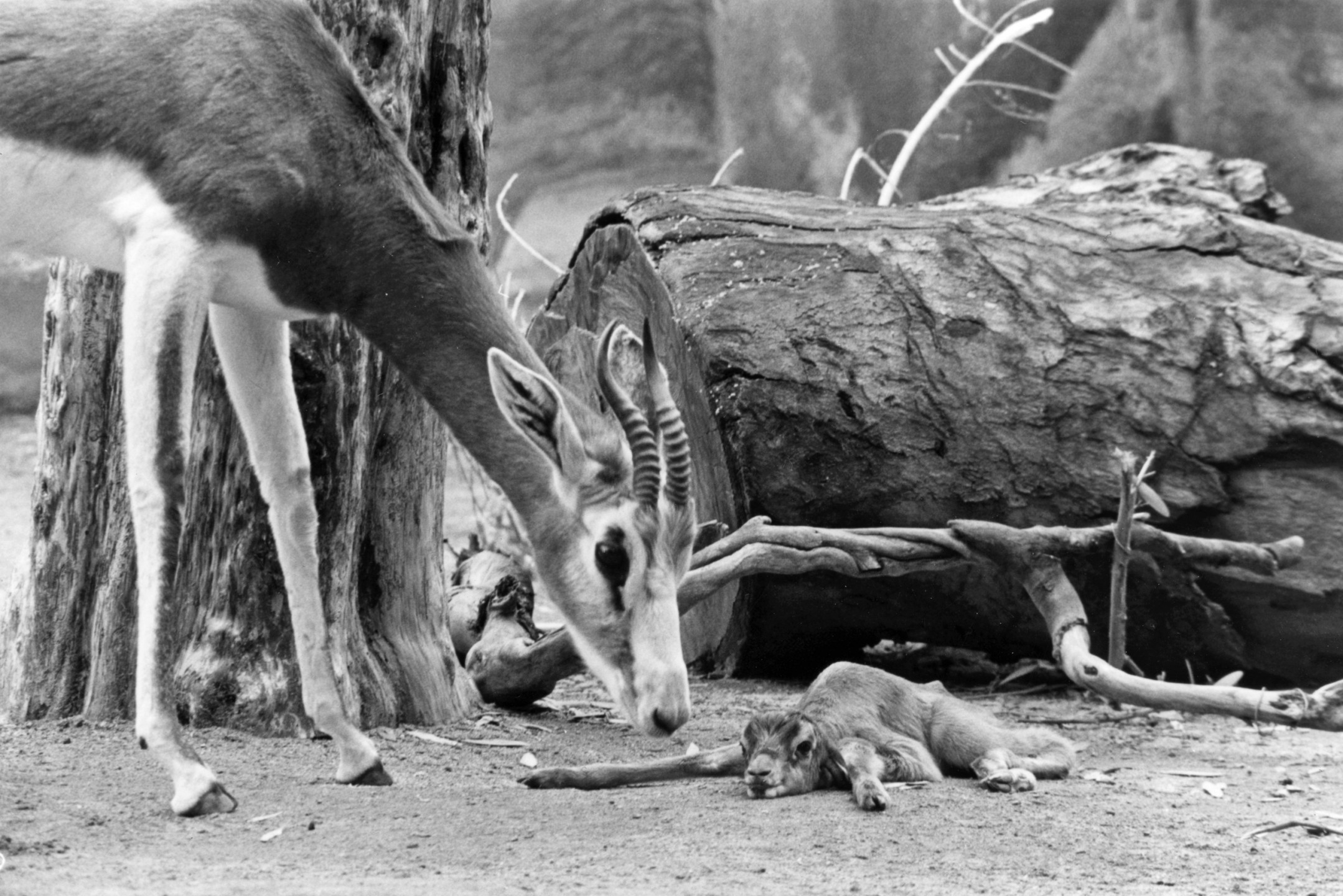Rejoicing for More Mhorr
From the looks of it, being the first Mhorr gazelle born in the Western Hemisphere is enough to tucker a calf right out! But in many antelope species, “tucking”—hiding a calf among rocks or in tall grass, where it lies down to stay hidden from predators—is a typical behavior. When the San Diego Zoo received four Mhorr gazelles in June 1981, the species was considered extinct in the wild. A reintroduction project had been considered, with animals that had been bred at a private reserve in Spain, but it was determined that the native habitat in the Saharan Desert areas of Morocco and Senegal was still unsafe because of the potential for poaching. Instead, the International Union for Conservation of Nature (IUCN) recommended that some of the animals be transferred to other zoos so that what remained of the species was not all in one place, and San Diego was chosen, along with East Berlin and Frankfurt. With these gazelles facing possible extinction, the birth of two female calves at the San Diego Zoo in February 1982 was tremendous news.
